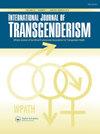跨性别者与焦虑:跨性别者与普通人群的比较研究
Q1 Social Sciences
引用次数: 124
摘要
背景:焦虑症是严重的公共卫生问题。可获得的关于跨性别人群焦虑症的数据由于数量少、缺乏匹配的对照人群以及选择非同质的跨性别人群而受到限制。目的:该研究的目的是:(1)确定未接受治疗的跨性别人群的焦虑症状(基于HADS),并将其与年龄和性别匹配的一般人群样本进行比较;(2)探讨经验性别、自尊、受害、社会支持、人际功能、异性激素使用等特定变量对焦虑症状水平的预测作用;(3)探讨跨性别者在接受异性激素治疗与未接受异性激素治疗时焦虑症状的差异。方法:共有913名自认为是跨性别者的人在3年内同意参加跨性别健康服务。这项研究的第一个目的是,592名未接受治疗的变性人按年龄和性别进行匹配,3816人来自普通人群。对于第二个和第三个目标,整个跨性别人群都被包括在内。测量方法:社会人口学变量和抑郁和焦虑(HADS)、自尊(RSE)、受害(ETS)、社会支持(MSPSS)和人际功能(IIP-32)的测量。结果:与一般人群相比,变性人患焦虑障碍的风险增加了近三倍(均p < 0.05)。低自尊和人际功能被发现是焦虑症状的显著预测因子。研究发现,接受变性激素治疗的变性女性焦虑症症状水平较低。结论:与普通人群相比,跨性别者(尤其是跨性别男性)有更高水平的焦虑症状,暗示可能存在焦虑症。自尊、人际功能和激素治疗与较低水平的焦虑症状相关的研究结果表明,需要针对自尊和人际困难进行临床干预,并突出了快速获得跨性别卫生服务的重要性。本文章由计算机程序翻译,如有差异,请以英文原文为准。
Transgender and anxiety: A comparative study between transgender people and the general population
ABSTRACT Background: Anxiety disorders pose serious public health problems. The data available on anxiety disorders in the transgender population is limited by the small numbers, the lack of a matched controlled population and the selection of a nonhomogenous group of transgender people. Aims: The aims of the study were (1) to determine anxiety symptomatology (based on the HADS) in a nontreated transgender population and to compare it to a general population sample matched by age and gender; (2) to investigate the predictive role of specific variables, including experienced gender, self-esteem, victimization, social support, interpersonal functioning, and cross-sex hormone use regarding levels of anxiety symptomatology; and (3) to investigate differences in anxiety symptomatology between transgender people on cross-sex hormone treatment and not on hormone treatment. Methods: A total of 913 individuals who self-identified as transgender attending a transgender health service during a 3-year period agreed to participate. For the first aim of the study, 592 transgender people not on treatment were matched by age and gender, with 3,816 people from the general population. For the second and third aim, the whole transgender population was included. Measurements: Sociodemographic variables and measures of depression and anxiety (HADS), self-esteem (RSE), victimization (ETS), social support (MSPSS), and interpersonal functioning (IIP-32). Results: Compared with the general population transgender people had a nearly threefold increased risk of probable anxiety disorder (all p < .05). Low self-esteem and interpersonal functioning were found to be significant predictors of anxiety symptoms. Trans women on treatment with cross-sex hormones were found to have lower levels of anxiety disorder symptomatology. Conclusions: Transgender people (particularly trans males) have higher levels of anxiety symptoms suggestive of possible anxiety disorders compared to the general population. The findings that self-esteem, interpersonal functioning, and hormone treatment are associated with lower levels of anxiety symptoms indicate the need for clinical interventions targeting self-esteem and interpersonal difficulties and highlight the importance of quick access to transgender health services.
求助全文
通过发布文献求助,成功后即可免费获取论文全文。
去求助
来源期刊

International Journal of Transgenderism
Social Sciences-Gender Studies
CiteScore
5.10
自引率
0.00%
发文量
0
期刊介绍:
International Journal of Transgenderism, together with its partner organization the World Professional Association for Transgender Health (WPATH), offers an international, multidisciplinary scholarly forum for publication in the field of transgender health in its broadest sense for academics, practitioners, policy makers, and the general population.
The journal welcomes contributions from a range of disciplines, such as:
Endocrinology
Surgery
Obstetrics and Gynaecology
Psychiatry
Psychology
Speech and language therapy
Sexual medicine
Sexology
Family therapy
Public health
Sociology
Counselling
Law
Medical ethics.
 求助内容:
求助内容: 应助结果提醒方式:
应助结果提醒方式:


